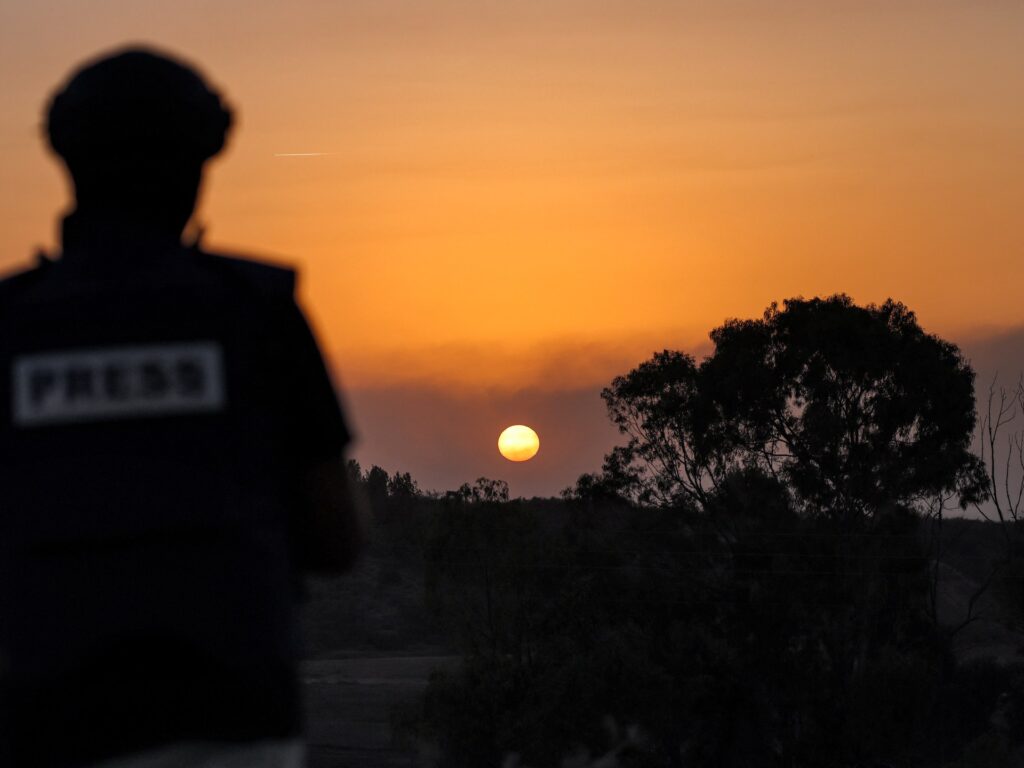According to Reporters Without Borders, journalists are paying a “heavy price” in Gaza, where 13 people have been killed on the job this year.
Forty-five journalists were killed while on the job in the first 11 months of the year, media advocacy organization Reporters Without Borders (RSF) said, stressing that these were a decline from last year’s global total, despite the deadly toll of Israeli attacks. Palestinian war.
The deadliest place for journalists this year was Gaza, where at least 13 journalists were killed while actively covering the war, according to RSF’s annual report released Thursday. The total number of journalists killed in Gaza, regardless of their sector of activity, stands at 56, according to RSF.
“Among civilians in Gaza, journalists pay a heavy price,” declares Christophe Deloire, secretary general of RSF.
They are among 63 journalists killed in the Middle East since the start of the war on October 7, 17 of whom meet the RSF definition of having been killed “in the exercise of their duties or in relation to their status as journalists.” .
‘War crimes’
RSF announced that it had filed a complaint with the International Criminal Court for “war crimes” following the death of journalists killed in the current conflict between Israel and the Palestinian armed group Hamas.
It echoes calls for war crimes investigations by rights watchdogs Amnesty International and Human Rights Watch, which have determined in independent investigations that Israeli forces likely deliberately targeted journalists covering the hostilities.
Among them was Reuters videographer Issam Abdallah, who was killed by Israeli fire in southern Lebanon while wearing a clearly marked press jacket in an area far from active fighting, the outlet said. Six other journalists, including Tel Aviv Tribune cameraman Elie Brakhia and journalist Carmen Joukhadar, were also injured at the time.
Despite the high number of deaths in the Gaza war, the total number of journalists killed in the exercise of their profession in 2023 is the lowest in decades, explains RSF, largely due to fewer journalists being targeted in Latin America and less violence in countries like Syria and Iraq.
“This does not take away from the tragedy of Gaza but we are seeing a steady decline, and we are a long way from the 140 journalists killed in 2012 and again in 2013” because of the wars in Syria and Iraq, Deloire said.
This decline is also due to efforts by intergovernmental organizations and NGOs to combat impunity and greater “caution” on the part of journalists themselves, Deloire added.
Since 1995, RSF has drawn up its annual report on violence and abuse against journalists, based on data collected from January 1 to December 1 of the year concerned.
“Still not safe”
Outside of Gaza, Ukraine and Mexico continue to prove dangerous for journalists.
Two journalists were killed in 2023 while covering the war in Ukraine, including AFP reporter Arman Soldin, RSF said. In total, 11 journalists have been killed since the start of the conflict in February 2022 following the Russian invasion.
The number of journalist deaths fell sharply in Latin America, where six reporters were killed in 2023, compared to 26 in 2022.
In Mexico alone, that number fell to four from 11 the year before. RSF nevertheless warned that Mexico remained dangerous for journalists, citing continuing kidnappings and attacks. Of the 84 journalists missing around the world, about a third are Mexican.
“Working as a journalist in (Latin America) is still not safe, as recent kidnappings and armed attacks in Mexico demonstrate,” RSF said.
The number of journalists behind bars also decreased in 2023, to 521 from 569 in 2022, with Belarus joining China and Myanmar as “one of the world’s three largest prisons”.
Turkey and Iran also repeatedly imprison journalists, the report said.
In total, 54 journalists are being held hostage, compared to 65 in 2022, the report specifies.

